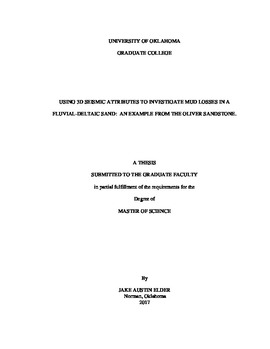| dc.description.abstract | Drilling operations in an actively developed basin in Wyoming can experience
large quantities of mud losses in a shallow zone along the intermediate (vertical) section
of the wellbore. These losses can negatively impact well economics due to the
unforeseen expenditures that come with the price of the mud itself and the extended rig
time it takes to overcome the mud loss issues. A typical well in the area costs
approximately 8 million dollars, of which, drilling cost accounts for 40-50%. Of the
roughly $4 million associated with the drilling cost, rig time makes up ~20%, and rig
rates range from $18,000 - $25,000 a day. It is common for severe losses to take
multiple days of additional rig time and even minor mud loss issues can add ~12 - 24
hours.
Since the depositional nature of fluvial deltaic sands produces moderate to high
degrees of grain sorting which translate to moderate or high values of porosity and
permeability, I hypothesized that regions in the Oliver sandstone exhibiting porosity and
permeability may correlate with localized areas of mud loss. Unfortunately, many of
the lost circulation wells do not have logs within the Oliver, prohibiting a direct mud
loss versus log porosity correlation. In contrast, all of the wells are contained within a
seismic data survey, providing an alternative correlation workflow. I computed a suite
of seismic attributes which reveal subtle depositional and structural information about
the area. There was no significant correlation of mud loss to structural attributes (e.g.
similarity, curvature, and dip magnitude). The same suite of seismic attributes were
analyzed using an Artificial Neural Network (ANN) algorithm to predict estimates of
porosity within the region of interest. Although the resultant volume delineated
laterally variable zones of low and high porosity in the Oliver Sandstone, the
correlations between mud loss volumes and porosity were very low, concluding that
porosity does not have a direct influence in the lost circulation. | en_US |
